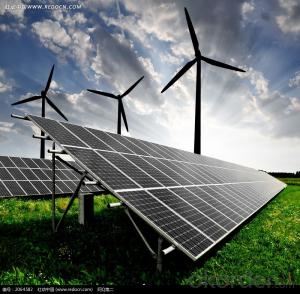Wholesale Polycrystalline Solar Cells with High Efficiency and Stable Performance
- Loading Port:
- Shanghai
- Payment Terms:
- TT or LC
- Min Order Qty:
- 5000 pc
- Supply Capability:
- 8000000 pc/month
OKorder Service Pledge
OKorder Financial Service
You Might Also Like
Polycrystalline Silicon Solar Cells:
A solar cell, is an electrical device that converts the energy of light directly into electricity by the photovoltaic effect, which is a physical and chemical phenomenon. It is a form of photoelectric cell, defined as a device whose electrical characteristics, such as current, voltage, or resistance, vary when exposed to light. Solar cells are the building blocks of photovoltaic modules, otherwise known as solar panels.
Polycrystalline Silicon Solar Cells Advantage:
• High efficiency and stable performance in photovoltaic conversion.
• Advanced diffusion technique ensuring the homogeneity of energy conversion efficiency of the cell.
• Advanced PECVD film forming, providing a dark blue silicon nitride anti-reflection film of homogenous color and attractive appearance.
• High quality metal paste for back surface and electrode, ensuring good conductivity, high pulling strength and ease of soldering.
• High precision patterning using screen printing, ensuring accurate busbar location for ease with automatic soldering a laser cutting.
Specification:
Mechanical data and design |
Format - 156 mm × 156 mm ± 0.5 mm |
Thickness- - 200 μm ± 20 μm |
Front (-) - 1.4 mm bus bars (silver),blue anti-reflection coating (silicon nitride) |
Back (+) - 2 mm wide soldering pads (silver) back surface field (aluminium) |
Temperature Coefficient of Cells |
Voc. Temp .coef.%/K -0.364%/K |
Isc . Temp .coef.%/K +0.077%/K |
Pm. Temp. coef.%/K -0.368%/K |
Electrical Characteristic |
Efficiency (%) Pmpp (W) Umpp (V) Impp (A) Voc (V) Isc (A) |
18.00% 4.380 0.538 8.141 0.634 8.740 |
17.90% 4.356 0.538 8.097 0.634 8.725 |
17.80% 4.331 0.537 8.065 0.633 8.710 |
17.70% 4.307 0.536 8.035 0.632 8.695 |
17.60% 4.283 0.535 8.006 0.631 8.680 |
17.50% 4.258 0.534 7.974 0.630 8.665 |
17.40% 4.234 0.533 7.944 0.629 8.650 |
17.30% 4.210 0.532 7.914 0.628 8.635 |
17.20% 4.185 0.531 7.88 -- 0.627 -- 8.620 |
17.10% 4.161 0.530 7.851 0.626 8.605 |
17.00% 4.137 0.529 7.820 0.625 8.590 |
Intensity Dependence |
Intensity [W/m2] Isc× [mA] Voc× [mV] Pmpp |
1000 1.00 1.000 1.00 |
900 0.90 1.000 0.90 |
800 0.80 0.99 0.80 |
500 0.50 0.96 0.49 |
300 0.30 0.93 0.29 |
200 0.20 0.92 0.19 |
IV Curve

Usage of Polycrystalline Solar Cells
Solar cells are often electrically connected and encapsulated as a module. Photovoltaic modules often have a sheet of glass on the front (sun up) side, allowing light to pass while protecting the semiconductor wafers from abrasion and impact due to wind-driven debris, rain, hail, etc. Solar cells are also usually connected in series in modules, creating an additive voltage. Connecting cells in parallel will yield a higher current; our solar cells have passed IEC Certification. With high and stable quality, our cells can greatly improve the performance of Solar Modules.
Applications of Polycrystalline Solar Cells
Assemblies of photovoltaic cells are used to make solar modules which generate electrical power from sunlight, as distinguished from a "solar module" or "solar panel". A solar array generates solar power using solar energy.
Packaging & Delivery of Polycrystalline Solar Cells
Carton Box Package and Deliver by air. It should be noticed that it should be avoid of water, sunshine and moist.
Solar Panel Images:
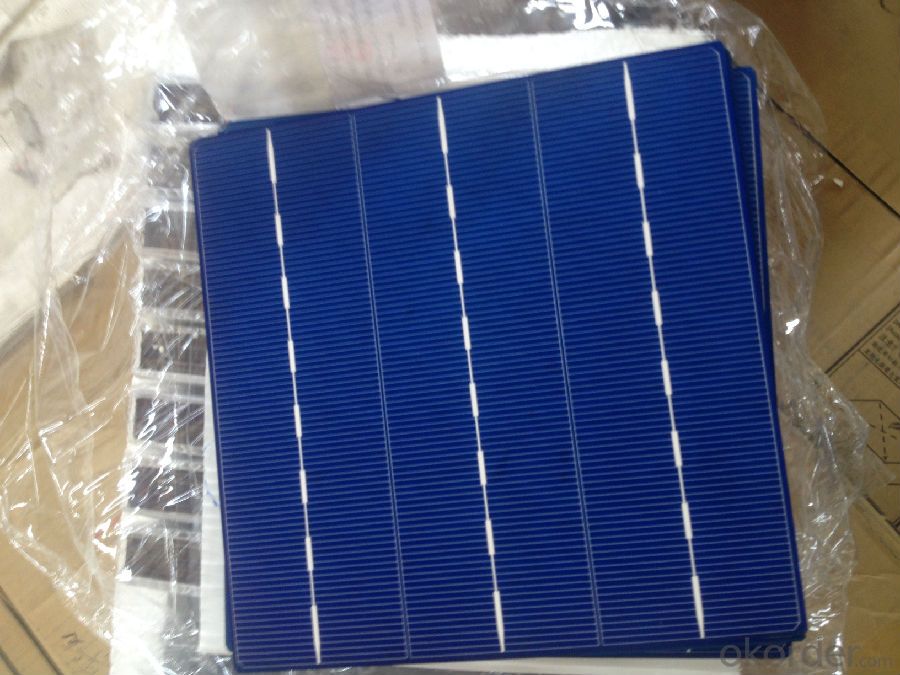
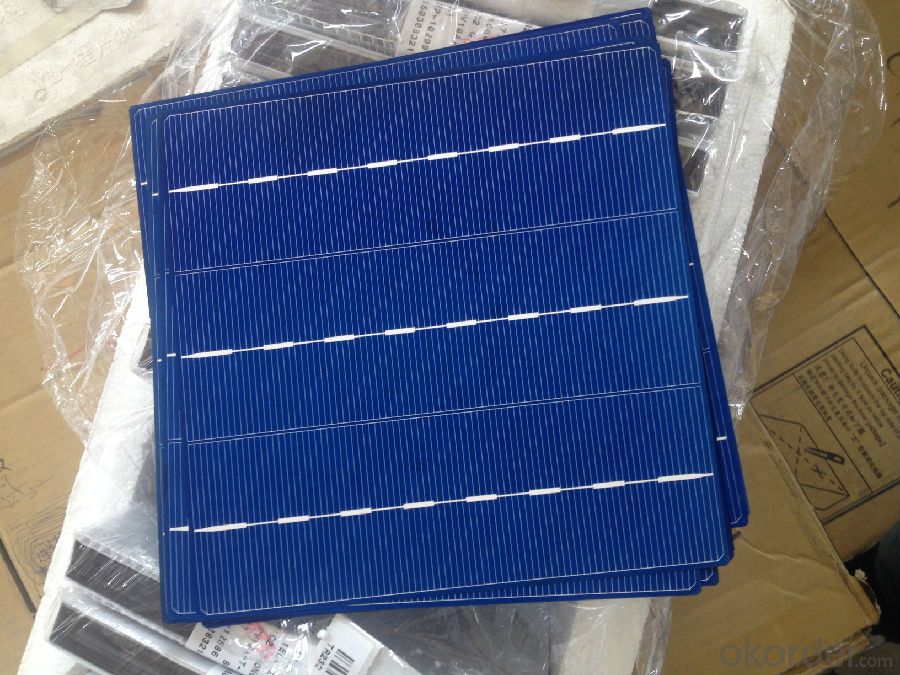
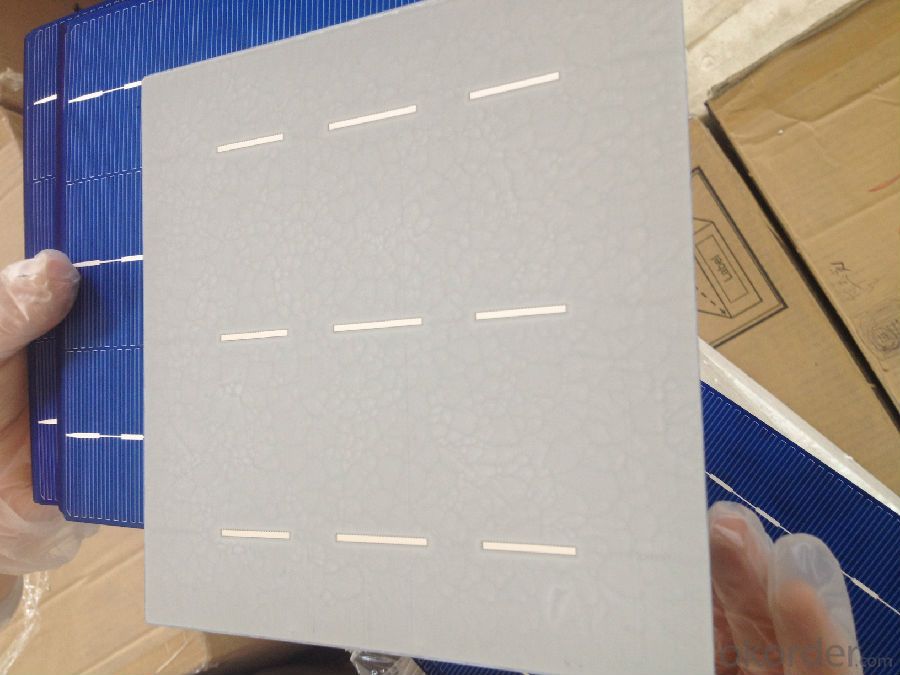
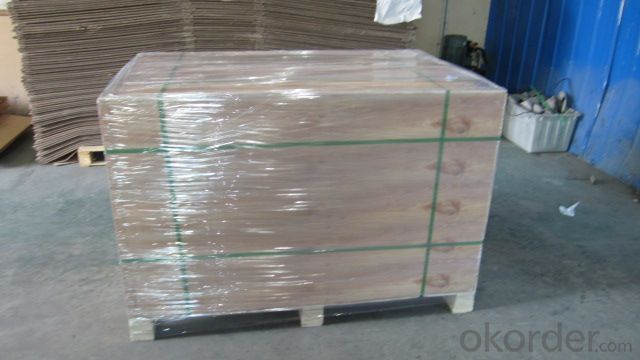
FAQ
We have organized several common questions for our clients,may help you sincerely:
①What price for each watt?
It depends on the efficiency of the solar cell, quantity, delivery date and payment terms.
②How long can we receive the product after purchase?
In the purchase of product within three working days, We will arrange the factory delivery as soon as possible. The pecific time of receiving is related to the state and position of customers.Commonly 7 to 10 working days can be served.
③Can you provide the peripheral products of the solar panels, such as the battery, controller, and inverter? If so, can you tell me how do they match each other?
Yes, we can, we have two companies for solar region, one is CNBM International, the other is CNBM engineering Co.
We can provide you not only the solar module but also the off grid solar system, we can also provide you service with on grid plant.
④What is your warranty of solar cell?
Our product can promise lower than 0.3% open box crack, we support claim after opening the box if it has crackm color difference or sth, the buyer should give pictures immediately, we can not accept the claim after the solar cell has assembled to solar panel.
• Timeliness of delivery
• ⑤How do you pack your products?
We have rich experience on how to pack the solar cell to make sure the safety on shipment, we could use wooden box or pallet as buyer's preference.
⑥ Can you do OEM for us?
Yes, we can.
Brief introduction of High Current Solar Cell
The output voltage of the high current solar cell must be calibrated high-voltage battery voltage. When the battery is fully charged, the controller disconnects the charging circuit. When the battery voltage is lower than the set voltage value, the charging circuit will re-open. Solar cells are to use light, when the charging is straight.
Slotted solar cells reduce the positive coverage, while expanding the contact electrodes, greatly improving the current collection, and thus obtain higher conversion efficiency.
Slotted solar cells due to process at the current level of processing technology and processing techniques should be relatively simple terms, it is the most suitable for large-scale industrial production, BP Spain UNSW use of technology has produced nearly a hundred since 1992 MW BCSC batteries, the main problem is to solve the industrialization process route design, and strict quality control of the production process.
Among the many aspects to consider in order slotting process and metallization process is most important, not only to the quality of the battery and cell conversion efficiency, but also a very strong impact on industrial productivity. Slotting process a variety of styles, laser, mechanical grooving, chemical corrosion, physical groove, etc., which have a mature technology; we can meet the design requirements. In particular it should be noted that the groove is formed BC battery key, groove, physical dimensions and surface state will very strongly affect battery performance parameters, in addition to metalization BC battery is a very important part, should arouse a high degree of seriously.
BCSC for monocrystalline silicon single-crystal silicon, should use high quality Cz silicon, should try to reduce the oxygen, and carbon content of heavy metal impurities, special emphasis is to select few defects, in order to ensure a higher wafer carrier lifetime.
- Q:Can solar cells be used to power remote monitoring systems?
- Yes, solar cells can be used to power remote monitoring systems. Solar cells convert sunlight into electrical energy, which can be stored in batteries or directly used to power monitoring devices. This makes solar cells a reliable and sustainable solution for remote monitoring systems that require continuous power in areas where grid electricity may not be available or practical.
- Q:What is the role of fuses in solar cell systems?
- The role of fuses in solar cell systems is to protect the system from overcurrent conditions. Fuses are designed to break the electrical circuit when excessive current is detected, preventing damage to the solar cells, wiring, and other components. By acting as a safety measure, fuses help maintain the overall integrity and performance of the solar cell system.
- Q:Can solar cells be used in off-grid water desalination?
- Yes, solar cells can be used in off-grid water desalination. Solar-powered desalination systems utilize solar energy to power the process of removing salt and impurities from water, making it suitable for consumption or agricultural use. These systems typically include solar panels to generate electricity for powering the desalination process, making them a sustainable and eco-friendly solution for off-grid water desalination.
- Q:What materials are used to make solar cells?
- Solar cells are typically made using materials such as silicon, cadmium telluride, or copper indium gallium selenide (CIGS).
- Q:Can solar cells be used to power water treatment plants?
- Yes, solar cells can be used to power water treatment plants. Solar energy can be harnessed by installing photovoltaic panels, which convert sunlight into electricity. This renewable energy source can provide a sustainable and cost-effective solution for powering water treatment plants, reducing dependence on fossil fuels and minimizing environmental impact.
- Q:What is the solar cell?
- The structure of solar cells is diverse. Now, PN-type solar cells composed of P-type semiconductors and N-type semiconductors are used. They are mainly composed of P-type and N-type semiconductors, electrodes, and antireflection films.
- Q:Can solar cells be used in remote sensing applications?
- Yes, solar cells can be used in remote sensing applications. Solar cells can generate electricity from sunlight, which can be used to power sensors, data loggers, and communication devices in remote sensing systems. This allows for continuous and self-sustained operation of these systems in remote and inaccessible areas where traditional power sources are unavailable.
- Q:How is the efficiency of a solar cell calculated?
- The efficiency of a solar cell is calculated by dividing the electrical power output of the cell by the incident solar power input. The formula for efficiency is Efficiency (%) = (Power output / Power input) x 100.
- Q:What is the impact of solar cells on reducing air pollution from power generation?
- Solar cells have a significant impact on reducing air pollution from power generation. By harnessing the sun's energy to produce electricity, solar cells generate clean and renewable power without emitting pollutants such as greenhouse gases, particulate matter, and toxic chemicals. This shift towards solar energy helps decrease the reliance on fossil fuel-based power plants, which are major contributors to air pollution and climate change. As solar cells continue to become more efficient and affordable, their adoption can play a crucial role in improving air quality and mitigating the harmful effects of power generation on the environment.
- Q:Anybody ever heard of thin film solar cell? What it that?
- Thin film solar cell is a kind of solar cell which is cheaper than the others.
1. Manufacturer Overview |
|
|---|---|
| Location | |
| Year Established | |
| Annual Output Value | |
| Main Markets | |
| Company Certifications | |
2. Manufacturer Certificates |
|
|---|---|
| a) Certification Name | |
| Range | |
| Reference | |
| Validity Period | |
3. Manufacturer Capability |
|
|---|---|
| a)Trade Capacity | |
| Nearest Port | |
| Export Percentage | |
| No.of Employees in Trade Department | |
| Language Spoken: | |
| b)Factory Information | |
| Factory Size: | |
| No. of Production Lines | |
| Contract Manufacturing | |
| Product Price Range | |
Send your message to us
Wholesale Polycrystalline Solar Cells with High Efficiency and Stable Performance
- Loading Port:
- Shanghai
- Payment Terms:
- TT or LC
- Min Order Qty:
- 5000 pc
- Supply Capability:
- 8000000 pc/month
OKorder Service Pledge
OKorder Financial Service
Similar products
New products
Hot products
Hot Searches
Related keywords











